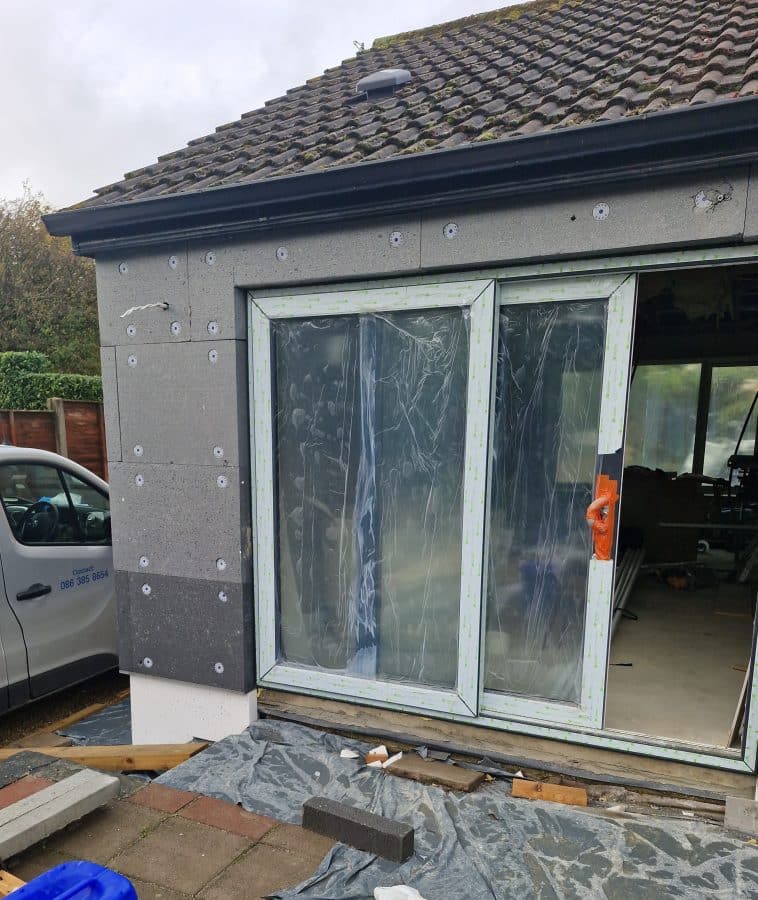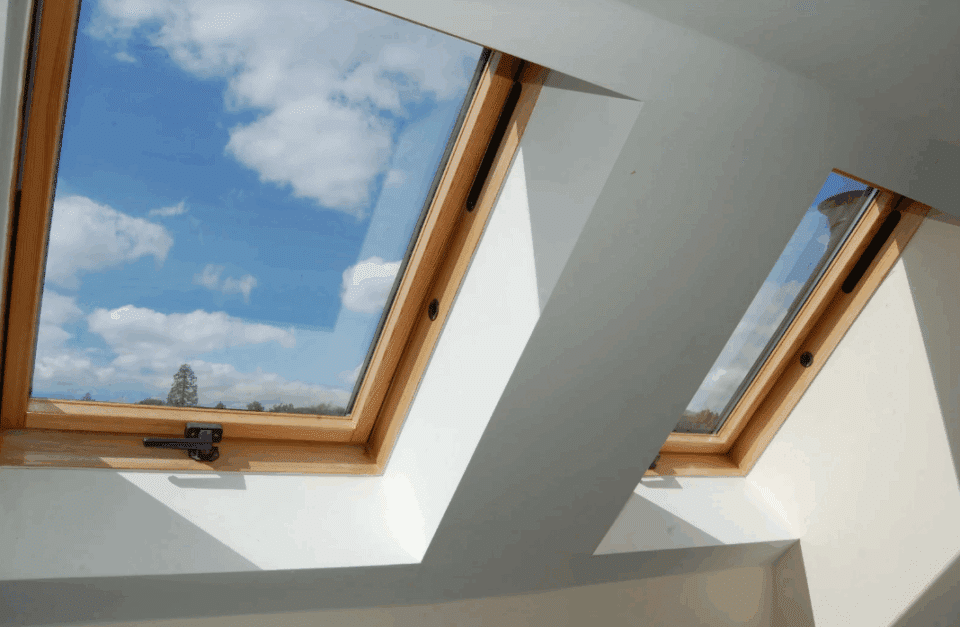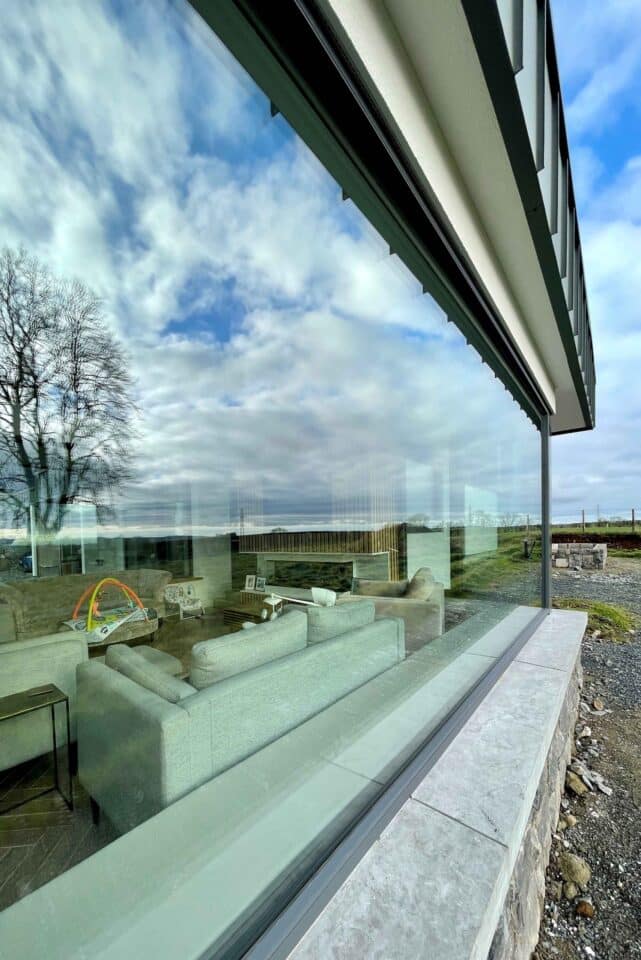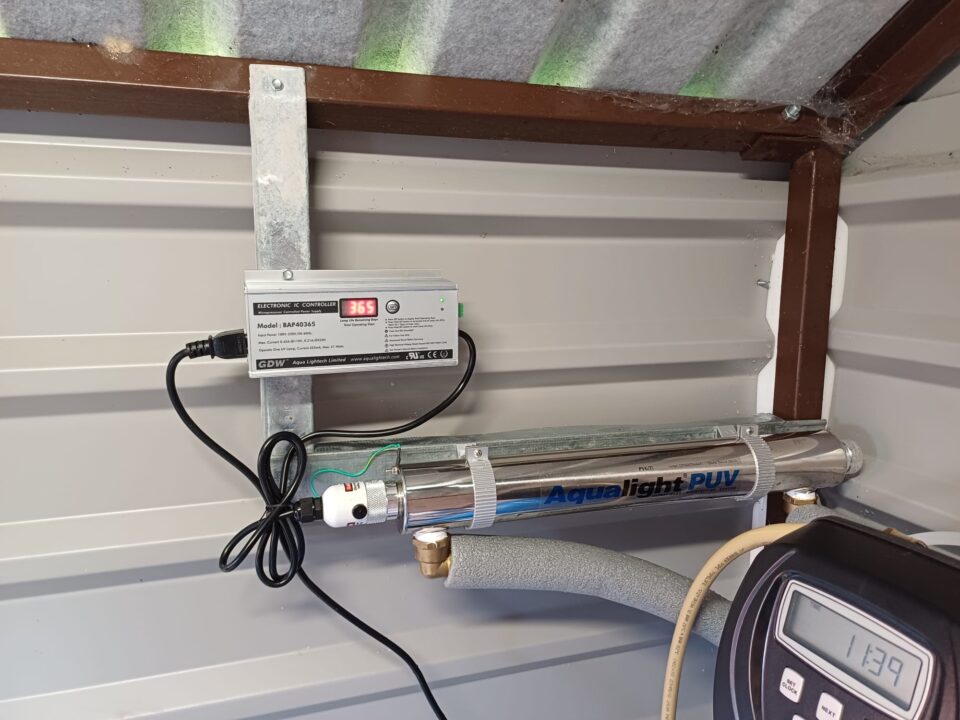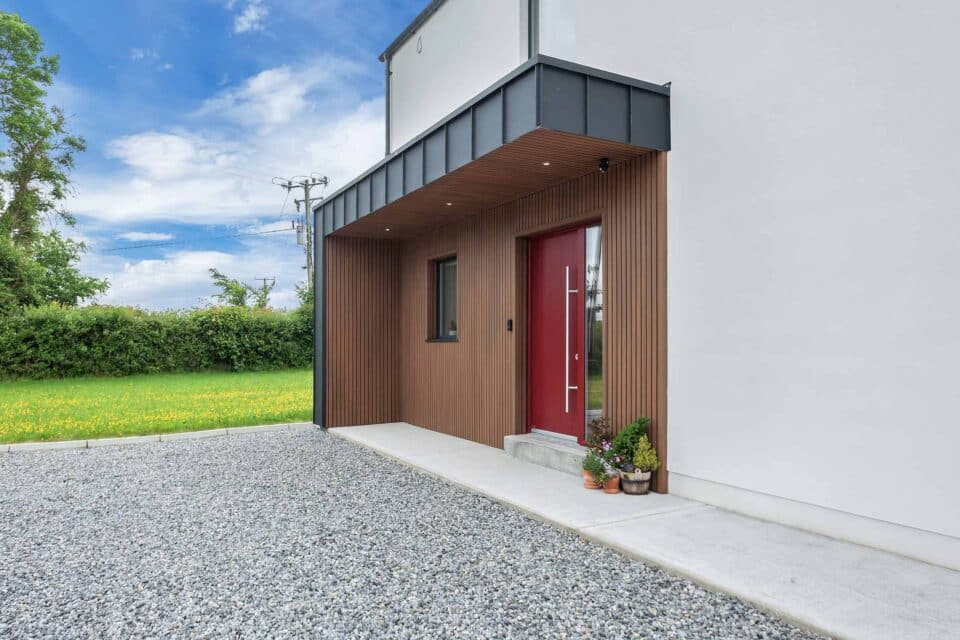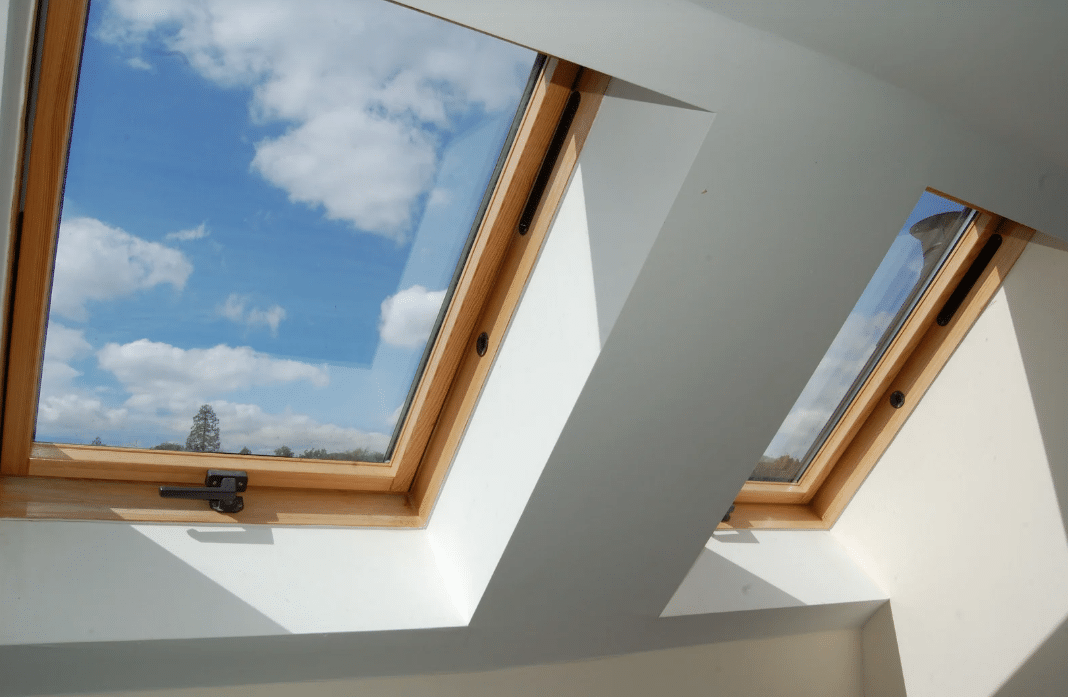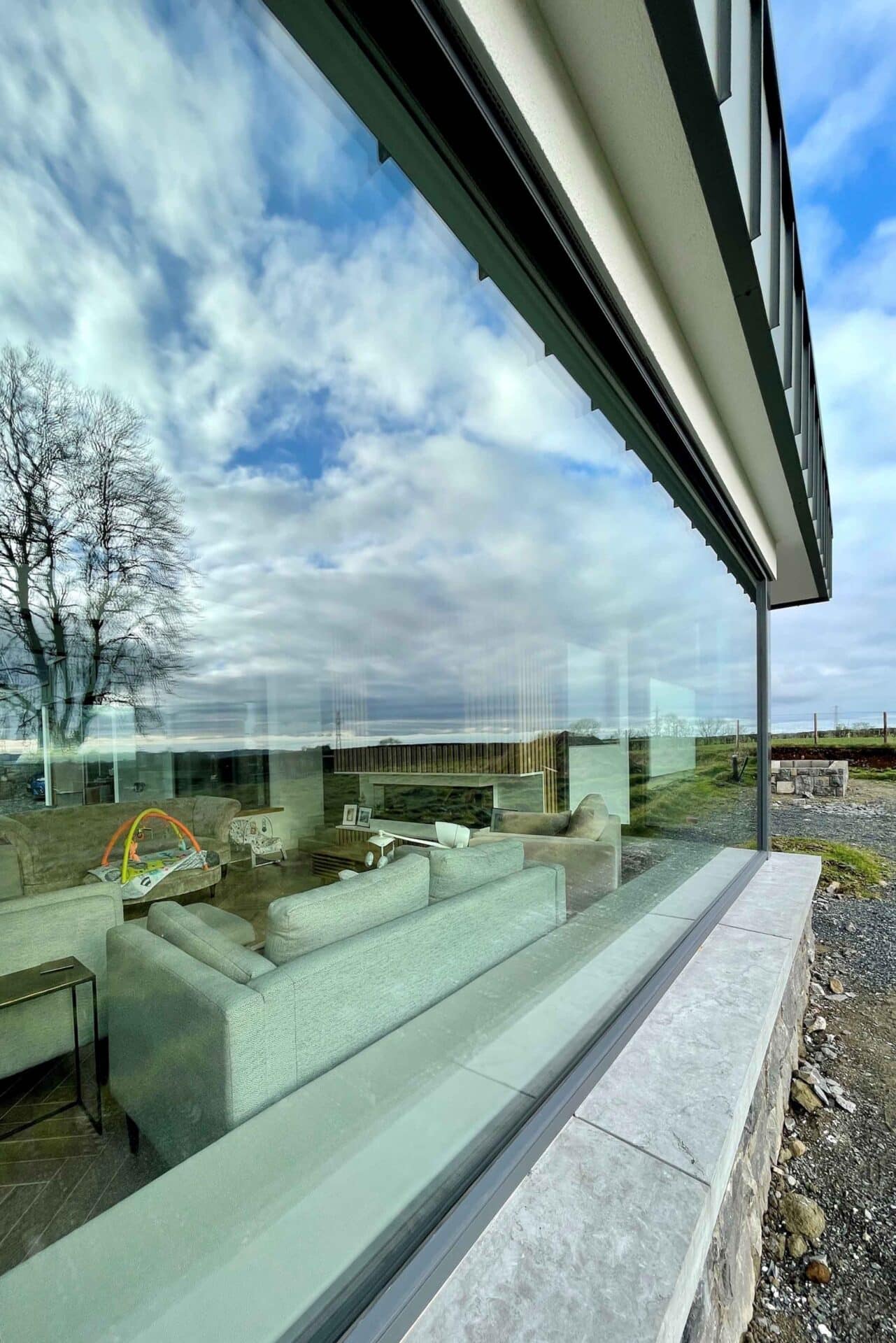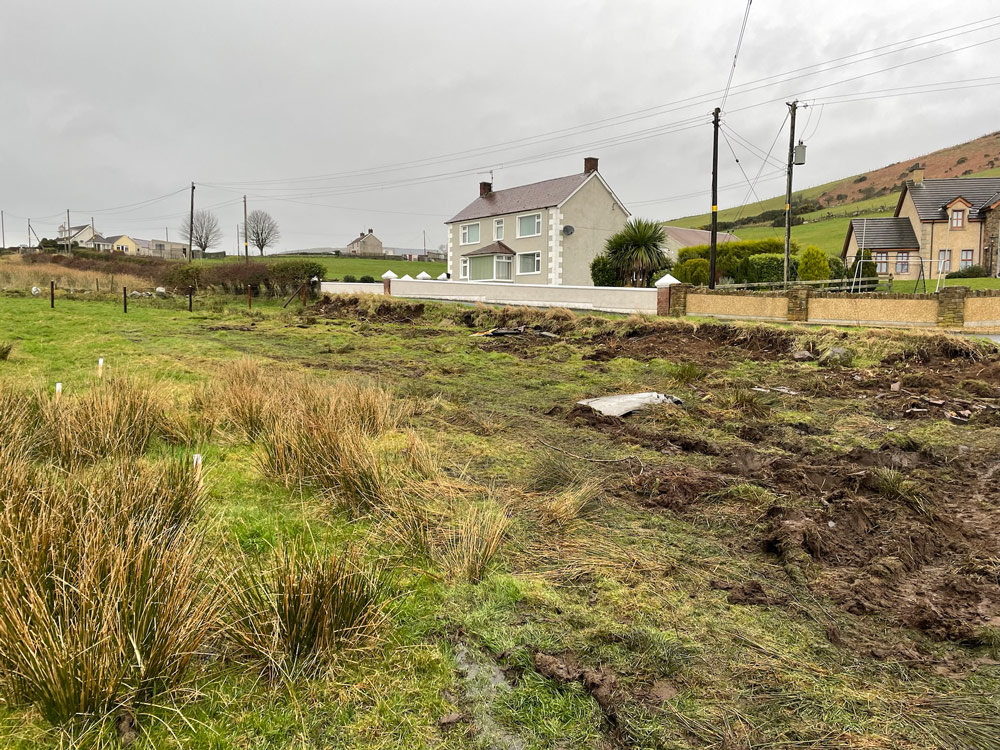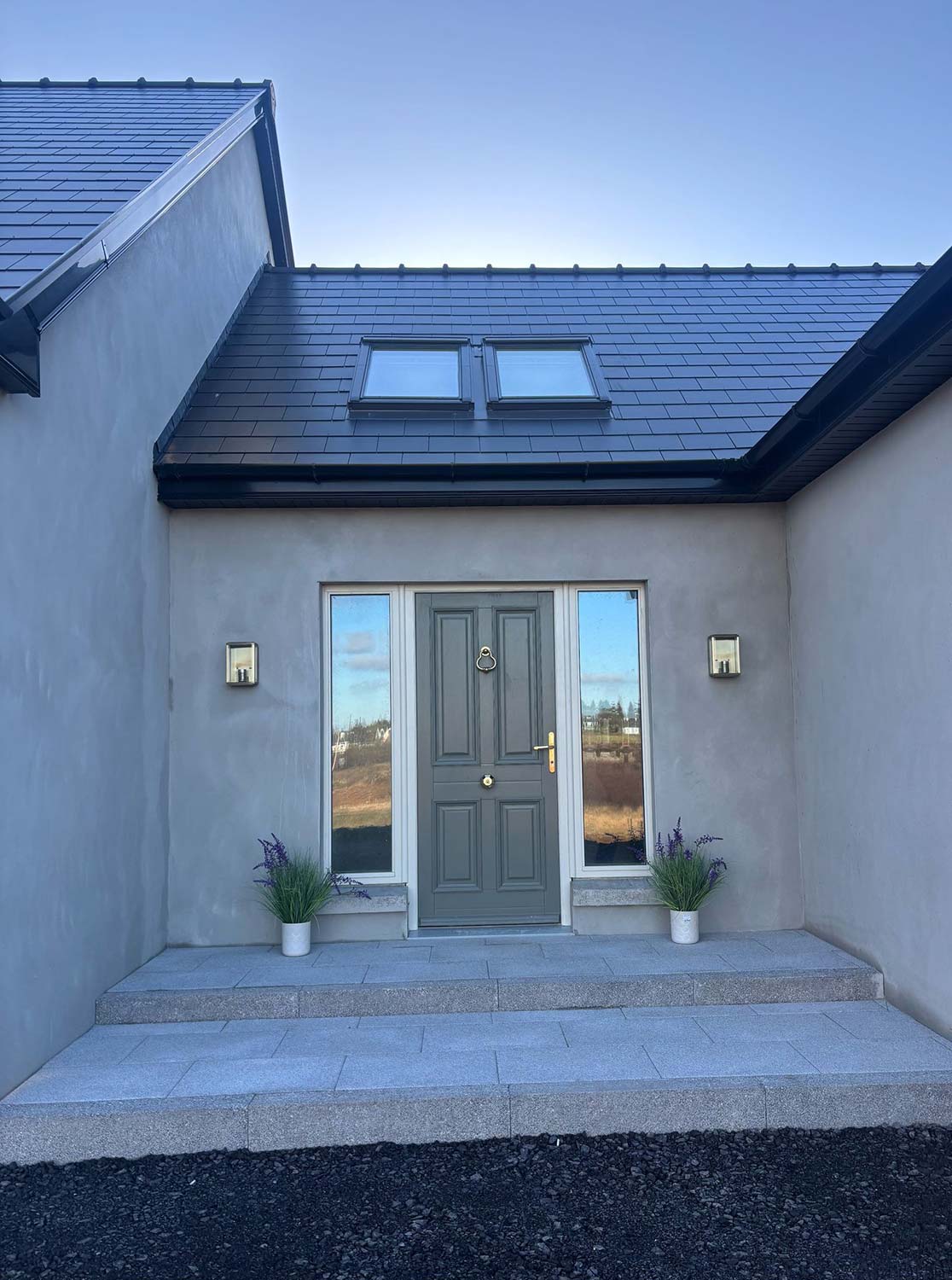In this article we cover:
- Common issues on site with photographs
- Checklist of what to check for when getting your windows and doors fitted
- Top tips and watchpoints
- Detailing at reveals:
If you are getting external wall insulation (EWI) fitted, a common detail is to move out the new window to the edge of the existing masonry structure. This leaves a smaller


This detail also gives an opportunity to allow for airtightness tape to be fitted internally. Airtightness around windows and doors typically involves applying an airtightness tape that bridges 50 per cent of the frame and the adjacent substrate, whether timber or masonry.
This tape provides a consistent, continuous barrier that eliminates air leaks.
While airtightness paints are increasingly popular, they should be considered supplementary in these high-stress areas, with the primary airtight layer established through tapes.
Thresholds:
Thermal bridging around doors and windows is often most pronounced at thresholds. One effective approach is to minimise the threshold length by opting for a sub-wall rather than floor-to-ceiling glass, reducing the exposed area and thus the potential heat loss. Incorporating structural insulation materials, or in some cases aerated concrete blocks, beneath thresholds can also help.
Sealing the external face of windows:
If caulking and weather stripping are not properly applied around the window during installation, it can lead to gaps that cause draughts or water penetration.
Remove guides:
A window that is difficult to open or close may have a damaged or misaligned mechanism, or the track may be dirty or obstructed. Often, window companies use guides during transit to prevent damage. If these are not removed, it can cause an obstruction during opening and closing.
Servicing:
It is common for windows to require a service after installation: the hinges may need tightening, along with the alignment made good.
Safety catches:
These are an important fitting on any new window. Building Regulations state they are required on all openings over 1.4m from the ground level outside, no matter the size or type of window.


Safety catches on windows are devices designed to prevent windows from opening too far, often for the purpose of preventing accidents, especially in homes with children or pets. They have the added benefit of improved security by preventing the windows from being opened from the outside.
Imperfections:
Imperfections in windows can affect their performance, appearance and longevity. There are several common types of imperfections to be aware of. These issues can arise during manufacturing, installation, or even during transit. Surface scratches can occur during handling or installation. Scratches can be superficial or deep, affecting the aesthetics of the window. While they may not always impact function, they can make the glass and/or frames look damaged and degrade the overall appearance of the window.
Weep holes:
While not every window has them, they are an important part of your new window. They exist to allow any water ingress to ‘weep’ out, ensuring that water is not held within the window to cause swelling or a leak internally.
Check delivery times:
These can vary wildly between window companies. Some can be as quick as three to four weeks, while others take up to 20 weeks for bespoke designs. This can have a huge effect on your construction programme.

